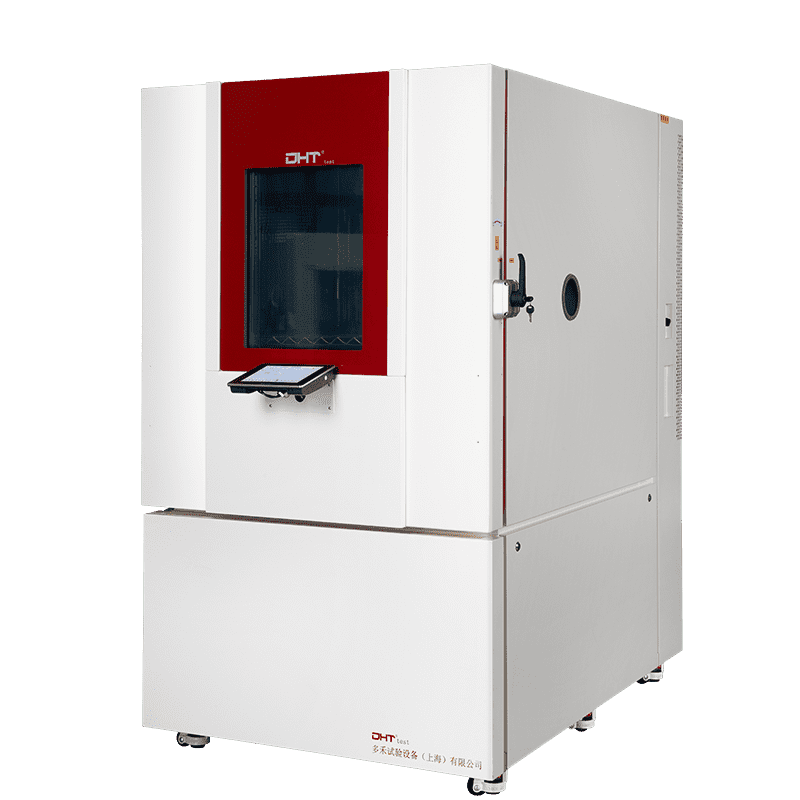Author: Shirley, Product Manager at DHT®
Why Environmental Precision Matters More Than Ever
In an age of rapid product innovation and unforgiving end-user expectations, temperature and humidity aren’t just environmental variables—they’re performance barriers. Whether you’re testing a new EV battery module, pharmaceutical compound, or aerospace-grade PCB, a single deviation in climate control can be the difference between regulatory approval and costly recall.
This isn’t about lab equipment. It’s about risk management.
That’s where constant temperature and humidity test chambers come in.
What Exactly Is a Constant Temperature & Humidity Chamber?
Imagine a miniature climate simulation center that precisely replicates any weather condition on Earth—from arid deserts to tropical storms. These chambers regulate temperatures from –70°C to +300°C and humidity levels from 20% to 98% RH. They’re essential for:
- Stress testing electronics for thermal expansion and condensation failures
- Verifying pharmaceutical shelf life under ICH protocols
- Simulating long-term material degradation in automotive or defense components
At its core, the chamber creates a repeatable, accelerated life test environment
Rethinking Key Performance Metrics: What Really Matters
Rather than just comparing datasheets, consider how each parameter connects to your product lifecycle goals.
- Thermal Range & Stability: Is your product expected to operate in sub-zero climates or desert heat? Look for chambers that support fast ramp rates (>25°C/min) and fine-tuned stability (±0.1°C) to replicate real-world stress.
- Humidity Precision: Especially for battery systems and optics, even a 2% RH drift can trigger failure. Top-tier systems offer ±2% RH or better.
- Spatial Uniformity: Not all parts of a test rack experience the same conditions. Choose designs with airflow circulation that maintains ±1°C/±2% RH throughout.
- Control System Intelligence: A modern test chamber should offer touchscreen interfaces, remote monitoring, and programmable schedules. Integration with MES or lab software isn’t a bonus—it’s a necessity.
- Form Factor: Benchtop for R&D? Vertical for production QA? Walk-in for EV packs or aerospace assemblies? Match size and load capacity to your longest test cycles.
Industry Use Cases That Go Beyond the Specs
- Automotive EV Batteries: Need thermal cycling from –40°C to +120°C while monitoring expansion, insulation breakdown, and condensation risk.
- Semiconductors: Subject to micro-crack propagation due to thermal shock and humidity stress.
- Pharma Stability Testing: According to ICH Q1A(R2), storage conditions must remain constant for months—even slight humidity swings can invalidate results.
- Aérospatiale & Défense: Focus on altitude simulation and accelerated aging for mission-critical components.
Beyond the Sticker Price: What Smart Buyers Actually Evaluate
- Lifecycle Value, Not Just Specs: Don’t overpay for specs you don’t need—but don’t underinvest and face downtime or out-of-spec results.
- Supplier Reliability & Global Support: Is spare part availability guaranteed in 5–10 years? Is on-site service available within 48 hours?
- Efficacité énergétique: Advanced compressors and intelligent defrosting can cut total cost of ownership by 20% or more.
- Data Compliance & Traceability: For regulated industries, audit trails and remote cloud backups are now standard expectations.
Leading Brands Worth Considering
- Weiss Technik (Germany): Known for unmatched durability (30+ years) and aerospace-grade quality. Best for defense, satellite, and research labs.
- DHT® (China): Blends European R&D roots with cost-efficiency. Offers rapid delivery, modular design, and a <1% failure rate in 3 years.
- ESPEC (Japan): Trusted by top electronics firms for high repeatability and global service coverage.
Make It a Strategic Investment
Environmental test chambers aren’t just equipment purchases. They’re long-term quality assurance assets. The best chambers protect your reputation, accelerate time-to-market, and reduce product risk.
Make your choice based not just on technical specifications, but on the realities of your testing demands—now and five years from now.
Still unsure? Our engineers offer free testing consultations and ROI-based model comparisons tailored to your exact specs.
FAQ
What is a Constant Temperature and Humidity Test Chamber, and what is it used for?
A constant temperature and humidity test chamber is a precision environmental simulation device that replicates extreme climatic conditions ranging from –70°C to +300°C and 20% to 98% relative humidity. It is widely used in industries like automotive, electronics, pharmaceuticals, and aerospace to accelerate aging tests, verify material stability, and assess product reliability. For example, it enables thermal cycling for EV battery modules or stability testing for pharmaceutical products under ICH guidelines.
Quels sont les principaux facteurs à prendre en compte lors du choix d'une chambre d'essai à température et humidité constantes ?
Beyond basic specs, focus on how the chamber aligns with your testing needs:
Temperature Range & Stability (±0.1°C): Ensures accurate simulation of extreme environments.
Humidity Control Accuracy (±2% RH): Crucial for batteries, optics, and sensitive components.
Spatial Uniformity (±1°C / ±2% RH): Guarantees consistent conditions across all test samples.
Smart Control Systems: Touchscreen programming, remote monitoring, and MES integration.
Form Factor: Choose benchtop, vertical, or walk-in based on sample size and testing scale.
Outre les spécifications techniques, quels autres facteurs sont importants lors du choix d'une chambre d'essai ?
Long-term value matters as much as initial specs:
Reliability & Service Life: Top brands offer stable operation for 20–30+ years to minimize downtime.
After-Sales Support & Spare Parts Availability: Ensure fast, local service and parts supply for 5–10 years.
Energy Efficiency: Advanced compressors and intelligent defrosting can reduce total cost of ownership by over 20%.
Data Traceability & Compliance: For regulated industries, audit trails and cloud backup capabilities are essential.


.png.webp)